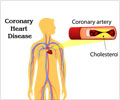In the treatment of heart attack, the 90-minute goal for inflation of an angioplasty balloon
In the treatment of heart attack, the 90-minute goal for inflation of an angioplasty balloon in a blocked coronary artery to restore normal blood flow is so revered it’s been codified in clinical guidelines, accreditation standards, and pay-for-performance programs. But is the 90-minute deadline really critical" Two experts will debate that question at the 30th Annual Scientific Sessions of the Society for Cardiovascular Angiography and Interventions (SCAI).
Allowing no more than 90 minutes to elapse between patient arrival in the emergency room and inflation of the angioplasty balloon—the so-called door-to-balloon time—is clearly beneficial, said Eric R. Bates, M.D., a professor of internal medicine at the University of Michigan in Ann Arbor.Many studies have shown that the size of a heart attack and the risk of death are directly related to the amount of time the heart is ischemic, or starved for blood and oxygen. Opening the blocked artery within 90 minutes has repeatedly been associated with better outcomes.
"For years we’ve known that time is muscle," Dr. Bates said. "The sooner you unblock the coronary artery, the more heart muscle you can salvage."
Timothy D. Henry, M.D., FSCAI, has no quarrel with keeping a close eye on the clock when treating heart attack patients, but said a hard-and-fast deadline may be counterproductive in some cases. "Time is important, and we need to treat patients as quickly as we can," said Dr. Henry, the director of research and an interventional cardiologist at the Minneapolis Heart Institute at Abbott Northwestern Hospital in Minneapolis. "But there is clear evidence that 90 minutes is arbitrary."
Some studies have shown that opening the blocked artery within 120 minutes is associated with good clinical outcomes, for example. In addition, ‘door-to-balloon time’ is a flawed metric, Dr. Henry said. A more clinically relevant indicator would be time to reperfusion, or re-establishment of blood flow through an open artery.
Dr. Bates countered that the 90-minute cut-off is sufficiently valid that a hospital unable to offer percutaneous coronary intervention (PCI) within that time frame should consider treating patients with clot-busting medications, rather than transporting them to a PCI-capable hospital. "Otherwise, those patients are paying a penalty for using PCI," he said.
Advertisement
Source-Eurekalert
LIN/B











